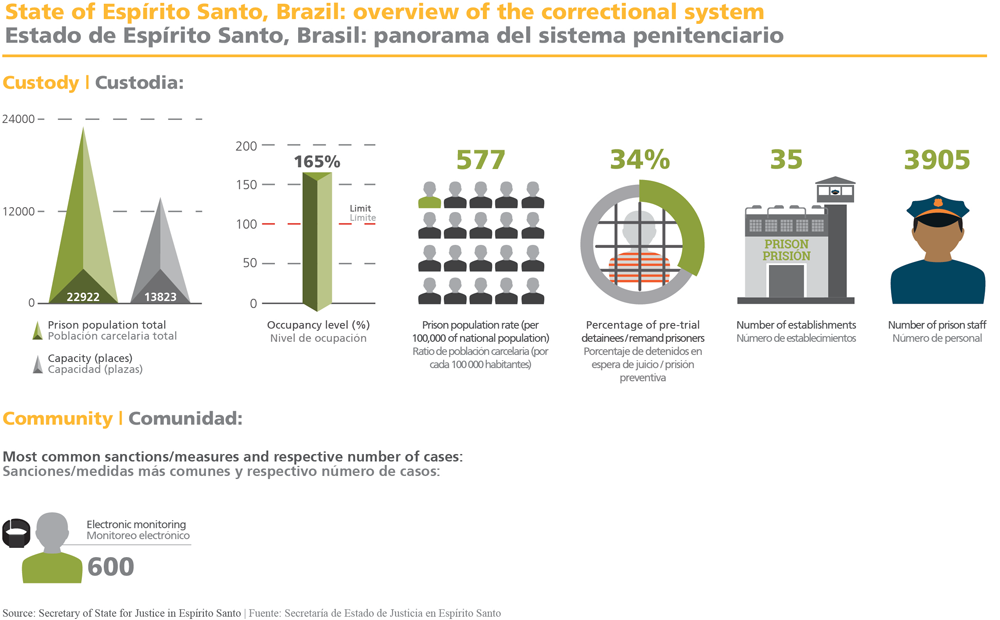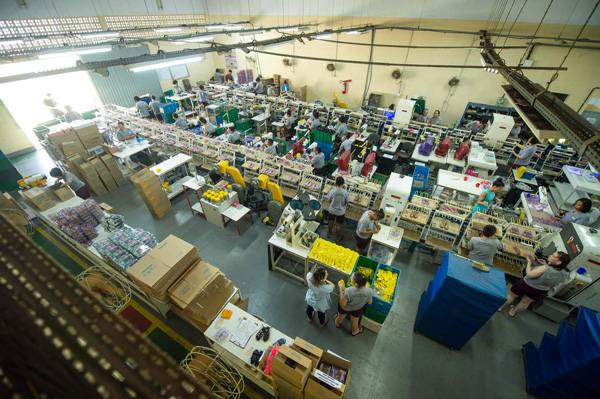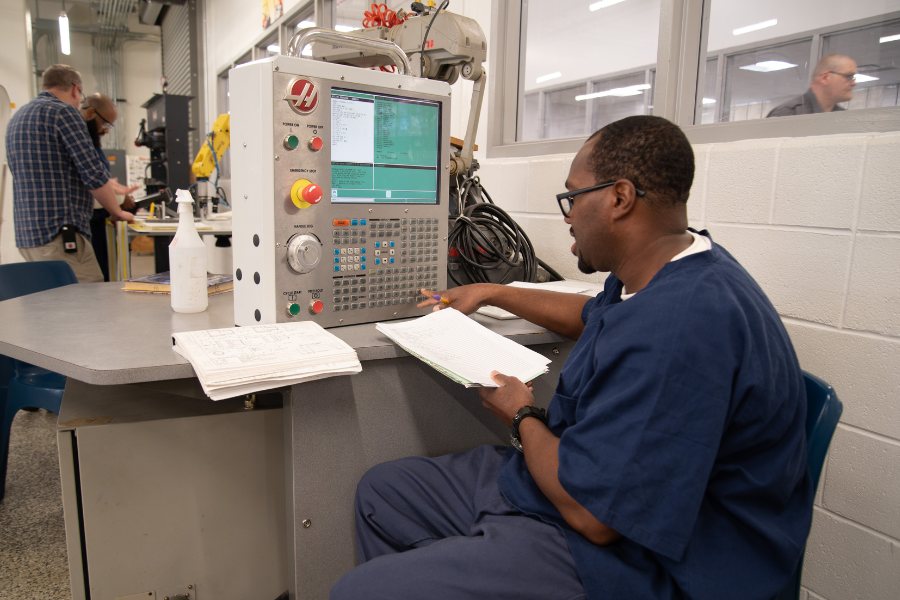// Interview: Luiz Carlos Cruz
Secretary of State for Justice, Espírito Santo, Brazil
JT: The Brazilian prison panorama presents several challenges, notably overcrowding and high prison rates, poor prison conditions, an excessive rate of provisional inmates, the shortage of prison guards and the proliferation of gangs. The 35 prisons in Espírito Santo (ES) have the capacity to hold 13,863 inmates, but currently hold 22,922 prisoners.
Beyond overcrowding, what are the main challenges facing the state of Espírito Santo in matters of justice, especially prison?
LCC: First of all, the State of Espirito Santo is grateful for the opportunity to share the policy adopted for the administration of the Capixaba prison system. Since I was invited at the end of October 2018 to take over the Secretary of State for Justice in Espírito Santo, the main issue to be addressed has been prison overcrowding.
Our state has been experiencing a worrying situation since 2015 when the occupancy rate passed the recommended limit of 137% and skyrocketed until we reached an average rate of 162%.
During 2007 to 2014, important investments were made in the expansion of vacancies and in the modernisation of the prison system, when we reached a total of 13,863 vacancies.
After 2014 the programme was discontinued, and at the same time there was a sharp increase in the prison population from 16,541 in December 2014 to 22,392 in December 2018. There was an average growth in these 4 years of 1,462 prisoners per year, and from December 2017 to December 2018 this growth meant there were 1,846 more prisoners in the system, while no new vacancies were created.
Taking this scenario into account, if in the 4 years of the new government that began in 2019, there are no more vacancies, it is estimated that we will have six thousand more people in the system, aggravating the issue of overcrowding at a rate that is predicted to be over 204%.
The situation changed from about 16,541 prisoners with 13,846 vacancies to 22,392 prisoners with the same 13,846 vacancies. In the traditional design of Brazilian prison architecture, a vacancy costs an average of 70,000 BRL (Brazilian Real).
Today the deficit stands at 10 thousand vacancies corresponding to a construction investment of about 700 million BRL. In addition, there is the cost of maintaining these new units and hiring more prison guards.
However, when we ask the population if they prefer to have more schools, more hospitals, better public transport conditions, for example, the population prefers the government to invest in improvements in public transport, education and health policies, rather than in improving the conditions of prisoners within prison units.
That is why we must be creative and find different solutions. It is not enough to simply build vacancies.
What strategies and measures are being put forward to solve the problems of the justice system and achieve reform?
LCC: Firstly, qualifying entry into the prison system. Not every offender actually needs to be sentenced to imprisonment, we need to have alternatives other than just the deprivation of their liberty.
That is why we understand the importance of investing in policies such as the establishment of a central office for alternative sentences. On the other hand, not all inmates are equal in their dangerousness and potential for rehabilitation.
We understand that it is necessary to identify the profile of each inmate and separate them using programmes suitable to the profile. We can build and use the vacancies in a more rational way: the highly dangerous inmate goes to a maximum-security unit, while the medium dangerous one goes to a medium-security unit, and so on.
Minimum-security inmates may even enter penal colonies with lower construction costs than maximum security prisons, or they may be placed under house arrest at no cost to the state, or even placed in some professional training and income generation programme so that they do not need to resort to criminal practices to secure their livelihood and that of their family.
They are valid alternatives, because they are prisoners who fit a profile in which they do not need to be deprived of their liberty, but who will have some form of criminal treatment that does not give the population the idea that they have escaped punishment.
Among the work we are carrying out, the creation of the central office for alternative sentences aims to qualify entrance to the prison so that only those who pose a threat to the community actually enter the unit.
Even for those who need to be arrested, with the proper profiling, we will not use the same resources to build minimum security prisons as to build a maximum-security prison.
Today the re-entry of people to the system is very high, with a rate of over 70%. However, we have a model created by a voluntary association known as APAC (Association for the Protection and Assistance of Convicted Persons) where this logic is reversed: almost 80% of the people who leave do not return to delinquency, which represents a level of re-entry on average of 20%.
APACs use very strong components of trust, recovery of dignity, professional qualification, and labour workshops, where the detainee can carry out some professional activity, and where this professional activity is a form of training and a way of acquiring skills so that the detainee can compete for a job in the labour market, or even provide services or produce goods through a cooperative, as a self-employed worker or even develop a small business.
The question is: if these APAC principles produce results in your social reintegration centres, can we also achieve similar results in a public prison by adopting these principles and methodologies and implementing the same measures with more dignity, with more confidence, and by giving the detainee the opportunity for professional qualification, and the opportunity for income generation?
For this, it is important to separate the prisoners according to the appropriate profile, because we cannot disregard the fact that there are still those offenders who see honour and glory in crime, who do not want to participate in a process of professional requalification, for those who are interested in continuing to commit crimes even from within the prison units.
It is also a great challenge for us to combat the criminal factions and criminal groups that are inside the prison and want to continue committing crimes and those who are not interested in rehabilitation practices.
Not every offender actually needs to be sentenced to imprisonment, we need to have alternatives other than just the deprivation of their liberty.
JT: The Ministry of Justice and Public Security plans to carry out strategic projects that foster integration among the Brazilian states, strengthening internal institutional mechanisms of governance, with respect to confronting crime and violence, while supporting the reduction of prison overcrowding and the increase in the rehabilitation rate of prisoners, with a view to reducing the rates of recidivism.
What is your vision regarding the joint projects that the Government wants to promote and to what extent do you think they will be successful in relation to the objectives of the Secretary of Justice of the State of Espírito Santo?
LCC: I believe that there is a strong alignment between the strategy of the Federal Government and the strategies of the state governments mainly in the area of security and the prison system.
DEPEN – the National Penitentiary Department – is the Ministry of Justice body responsible not only for caring for prisoners in federal prisons, but mainly for establishing public policies for the prison system nationwide. And it is precisely in this latter scope of action that DEPEN needs to be strengthened.
I believe that its structure today is very small, but that it is nevertheless increasingly becoming a national reference. It is important for there to be a distinction between the roles of administrating the execution of sentences in federal prisons and that of promoter and inducer of public policies at the national level.
I think that this structure needs to improve and take more efficient action by technically supporting the states and acting in such a way that the prison system can develop in a more uniform way throughout the country.
One example is that all states that have prison projects that will be financed by the National Penitentiary Fund (FUNPEN) are dependent on the federal government in the sense that they need the approval of the DEPEN engineering department.
Nevertheless, the engineering department does not have enough engineers to review and approve all the projects that are submitted, which delays the use of these resources for too long.
It is important to develop a larger structure so that it can induce national public policies, fostering an environment of innovation and more sustainable development of state systems. Even with all these difficulties, DEPEN has been a great partner, supporting our projects.
We can state that today we have a very well-adjusted alignment not only with the Ministry of Justice but also with the CNJ – National Council of Justice – a supervisory body of the judiciary, which has even pointed out the State of Espírito Santo as a model to be followed in terms of integration.
It is also worth noting the support of the Ministry of Justice in the financing process with the Inter-American Development Bank – IDB, with the recognition that the policies developed in the state of Espírito Santo go hand in hand with the policies outlined by the Federal Government through the Ministry of Justice itself and by DEPEN.
(...) not all inmates are equal in their dangerousness and potential for rehabilitation. We understand that it is necessary to identify the profile of each inmate and separate them using programmes suitable to the profile.
JT: In September 2019 a prison “mutirão” was held, promoted by the Public Defender’s Office of the State of Espírito Santo, which resulted in the granting of the benefit of house arrest, using the electronic anklet, to more than 100 prisoners. (Source: “Over 100 inmates benefit from getting out of prison and wearing anklets in ES”, Folha Vitória, 13/09/2019).
Is the granting of this benefit only a one-off situation or is there a system of penalties and alternative measures that supports the improvement of the efficiency of the ES prison system?
LCC: The organised “mutirão” for Public Defenders paid a price for being the first. Sometimes everything doesn’t always go according to plan. But in any case, we can say that it was successful because it was an experiment where some legal theses were consolidated by members of the judiciary, the defense and the public ministry.
These consolidated conclusions can help the judge to adopt such criteria from now on, facilitating the trial process. The “mutirão” was facilitated here in Espírito Santo by the fact that we were the first state in Brazil to implement the electronic system of criminal execution.
The unified electronic enforcement system – the “SEEU” – was deployed by addressing 100% of criminal justice enforcement processes. This tool was also tested through filters that allowed those involved in the “mutirão” to select which were the prisoners and the processes where these theses could be applied.
The modelling of a faster procedure using the electronic process system with the establishment of filters, a consensual understanding of judges, prosecutors and defenders, allowed certain theses to be pacified and to have an immediate application in the ongoing execution processes.
The specific result, that is, having 100 prisoners in the electronic monitoring system alone, is not substantial, but has also served to make some judges understand that electronic monitoring has become a viable alternative to incarceration.
At the beginning of the year 2019 we had about 170 monitors, in the month of October there were already more than 600 electronic monitors, which corresponds to a virtual prison unit with 600 vacancies, and which consists of a saving of 42 million in the construction of a prison unit. In that sense I think the “mutirão” had a good result.
Now let us move on to what has been modelled in this “mutirão”: the filtering system, the identification of theses, and the segregation of processes with immediate application of these theses.
Also, the verification that the electronic anklet is actually a tool that can be used and expanded for other inmates, including the provisional ones. In Espírito Santo we have more than 10,000 condemned prisoners, and about 8,000 provisional prisoners who still need a trial.
What are the main challenges you see for the penitentiary system in Espírito Santo?
LCC: The main challenge is to overcome prejudices. The programme of Espírito Santo is focused on rehabilitation achieved through work. We recently held a very interesting event, in which an “official seal” was awarded, where 77 entrepreneurs and public institutions, that are partners of the Justice System, received the seal for having hired a significant number of prisoners.
Today we have over 3,500 inmates working and over 2,000 inmates with paid work, and that number tends to grow. Overcoming prejudice is important. We had the testimony of some businessmen and we realised that what delayed the decision made by these companies and institutions to hire the prisoners was the perception that the involvement with people who would be very dangerous could cause problems for the companies.
When the entrepreneurs accepted the challenge, the surprise of these same entrepreneurs when they received the inmate and saw the response they had in terms of productivity was great.
This is very good and is contagious to other businessmen who see this initiative as a great business opportunity that is very advantageous for the company, for the system, and especially for that vulnerable person who was deprived of freedom, and who now has hope for a much better future.
I want to stress that the inmates who are put forward for this programme are selected according to the type of task to be performed and that they have a profile appropriate to the job offered.
We have also expanded the offer of professional courses in the area of construction, electricity, refrigeration, sewing, organic agriculture, industrial kitchen, among others.
Finally in 2019, challenging common sense, the public security policy of the “Present State Programme” which is focused not only on the police axis but, above all, on a strong social component, integrating the efforts of state powers and institutions to reduce the rates of violence and crime, combined with a policy of reducing incarceration based on the qualification of prisons and the adoption of various alternative sentences, produced significant results.
We managed to reverse the initial situation, closing the month of December 2019 with a reduction in the prison population by 141 prisoners, compared to the end of January 2019.
//
Luiz Carlos Cruz graduated in law from the State University of Rio de Janeiro and also in Nautical Sciences. He was a Lieutenant Commander of the Brazilian Navy, is a Federal Police Delegate, held the position of Head of Operations of the Extraordinary Security Secretariat for Major Events – SESGE, responsible for planning, training and coordination of safety measures for the World Youth Day and Confederations Cup (2013), World Cup (2014) and Olympic Games (2016). He was president of the National Commission for Terminal Ports and Waterways Security – CONPORTS. He was appointed Secretary of State for Justice of Espírito Santo and took office in January 2019.






